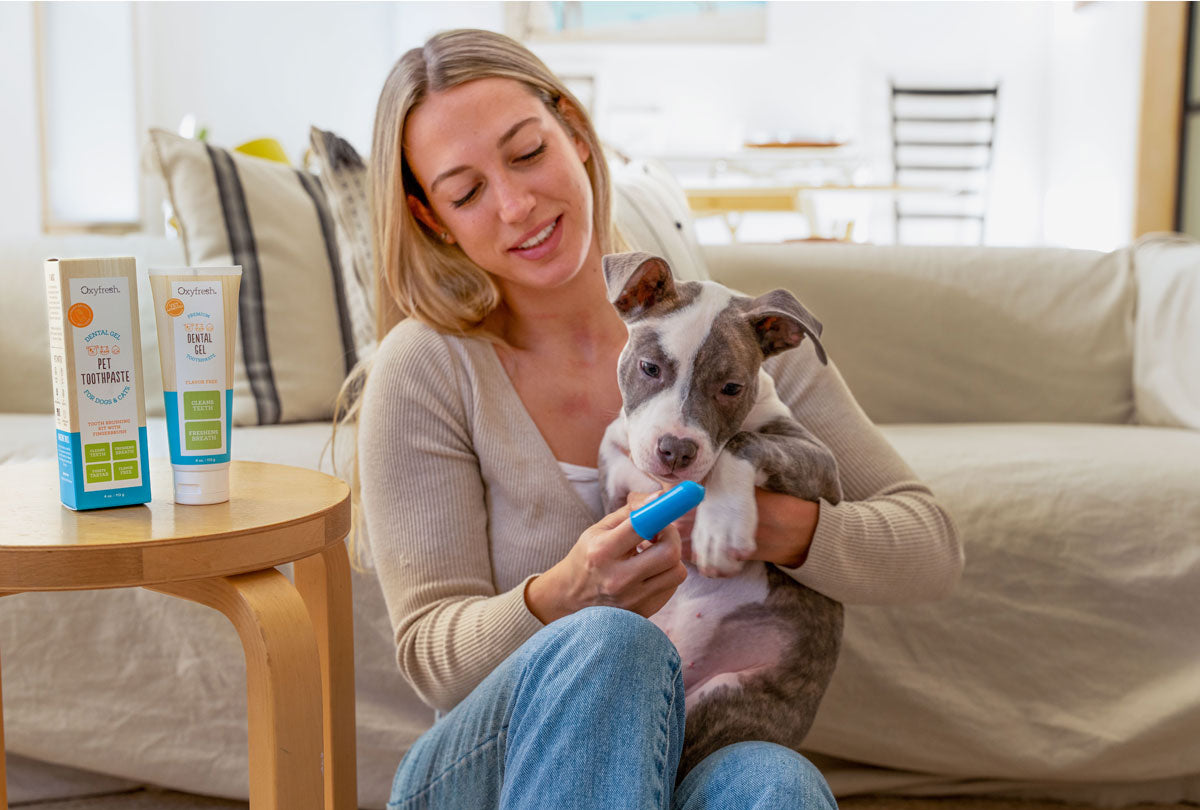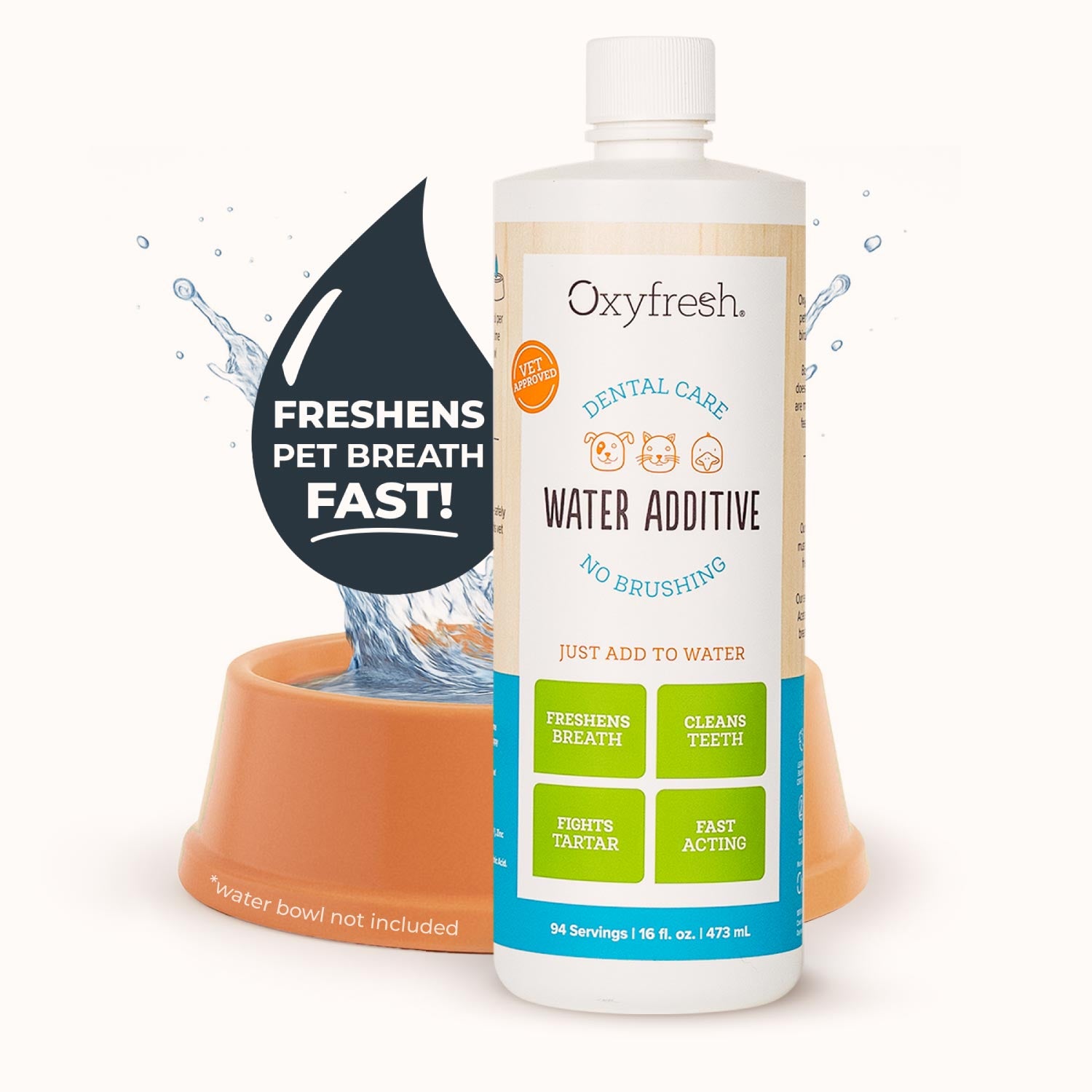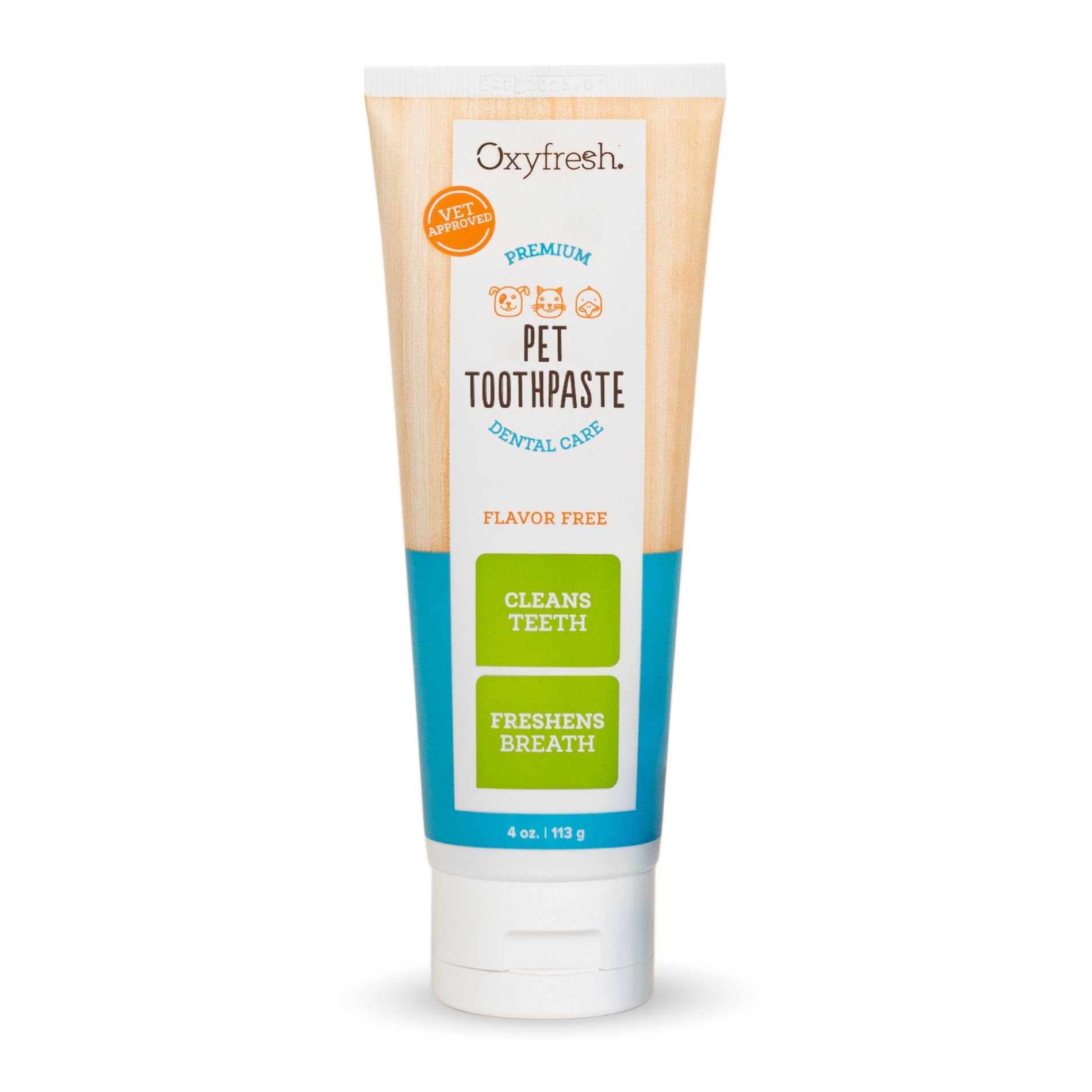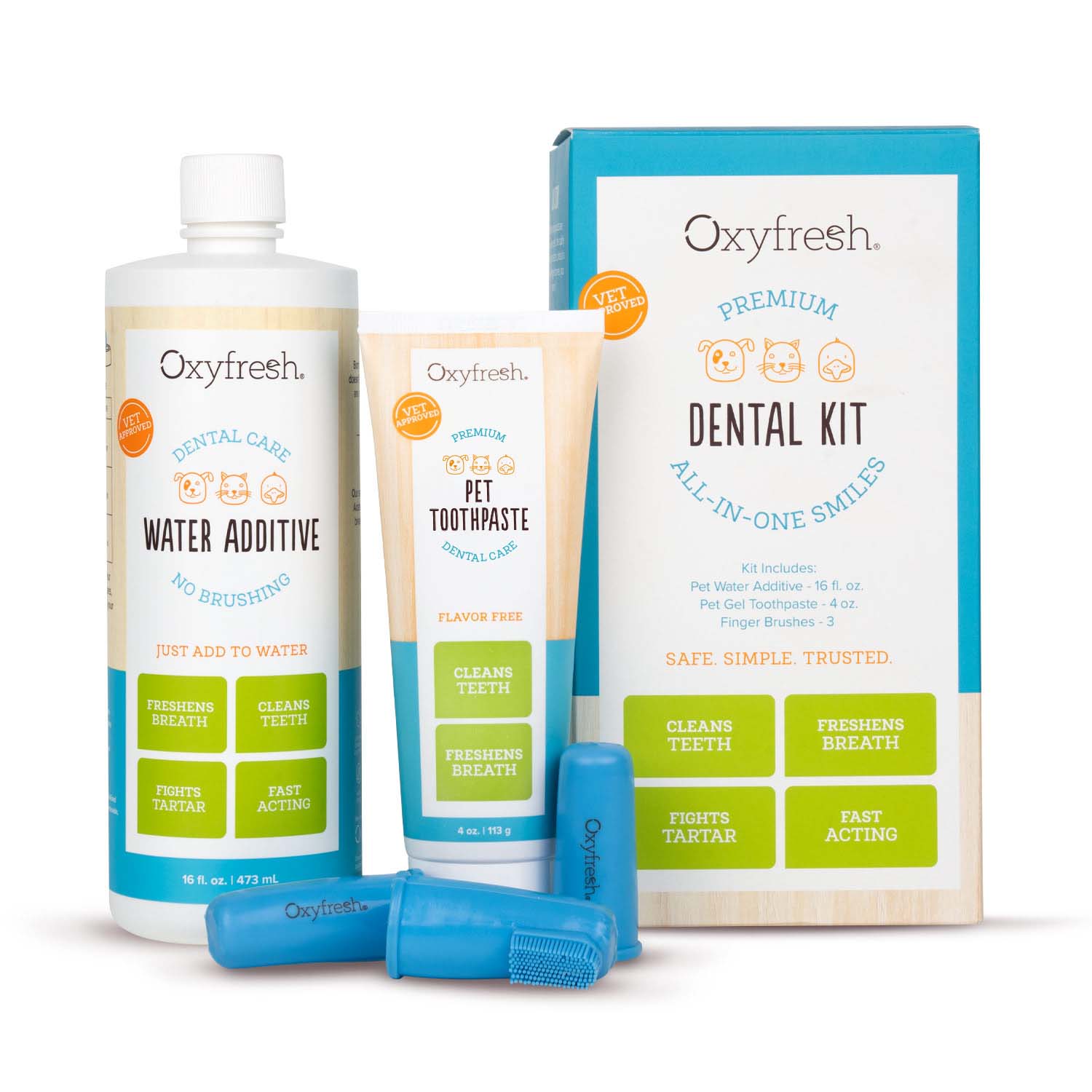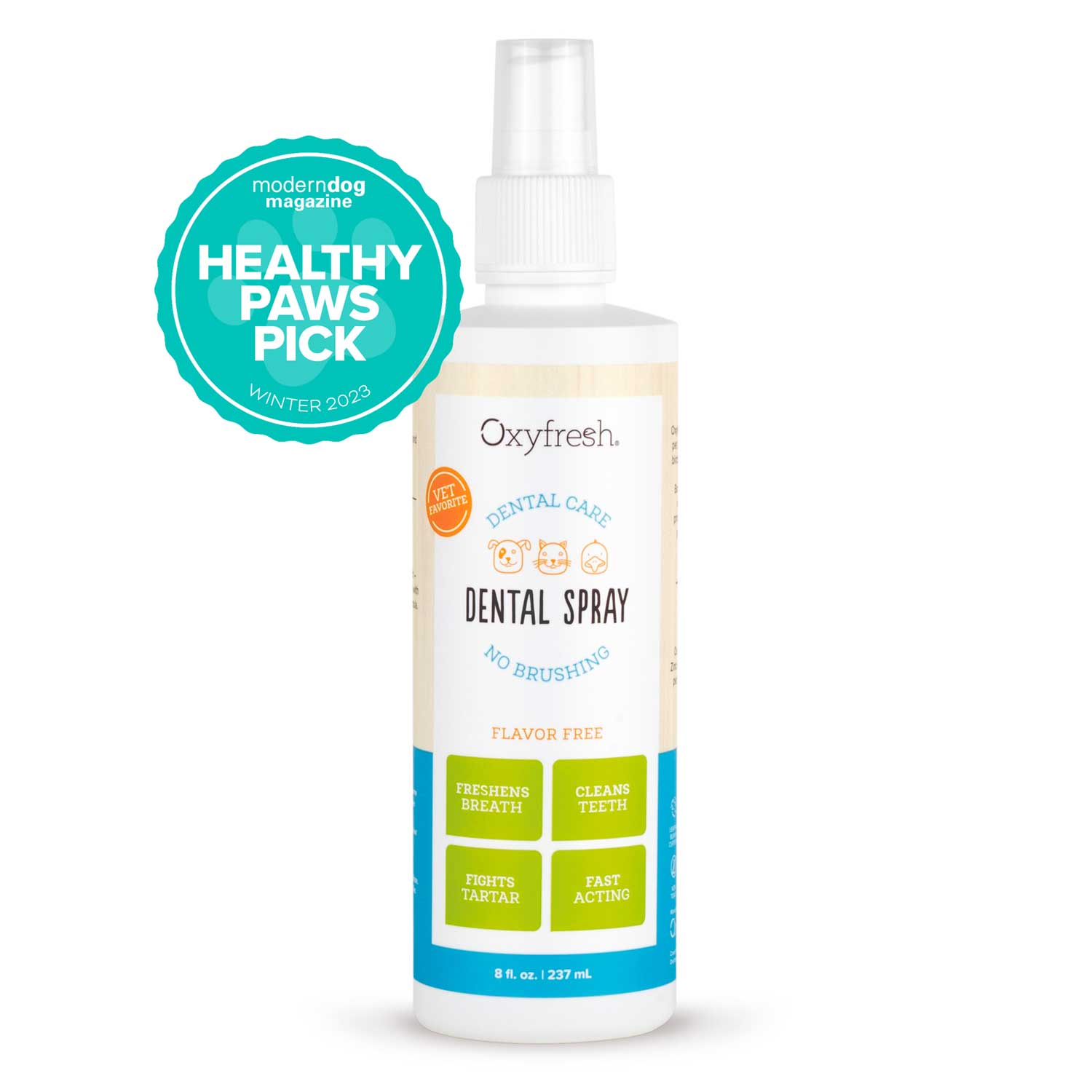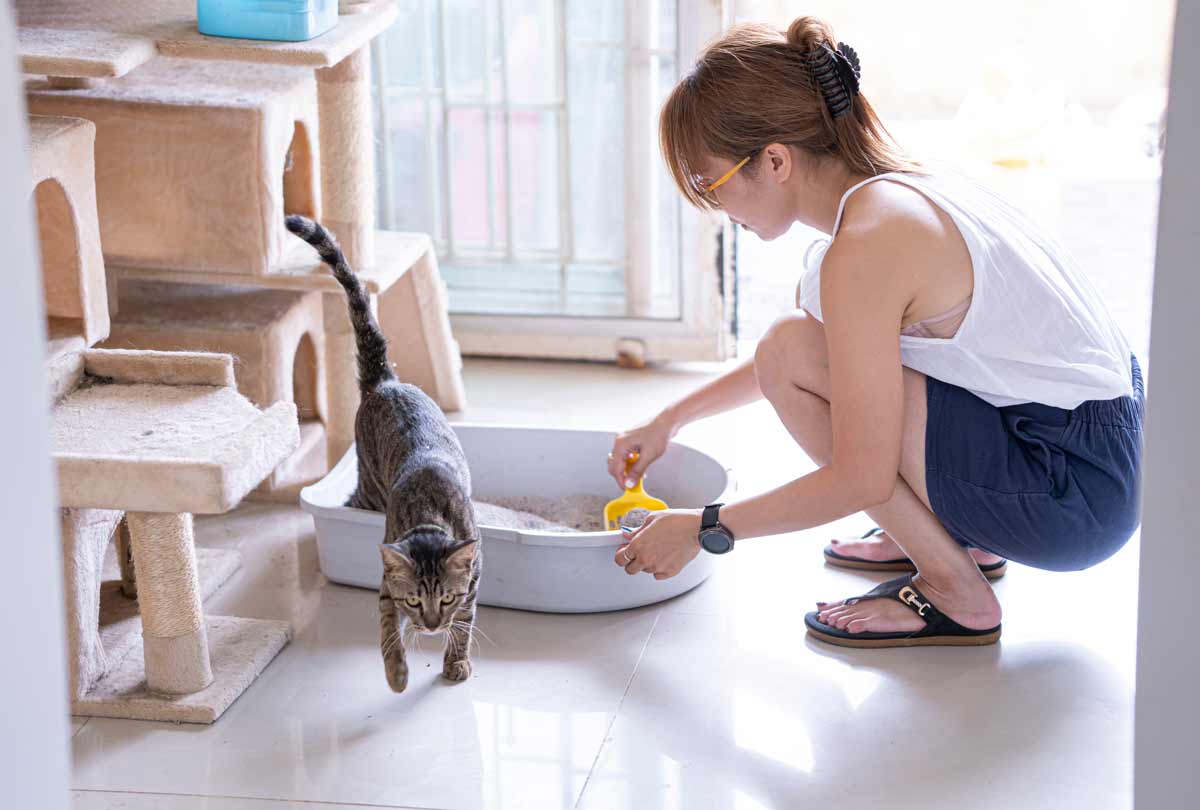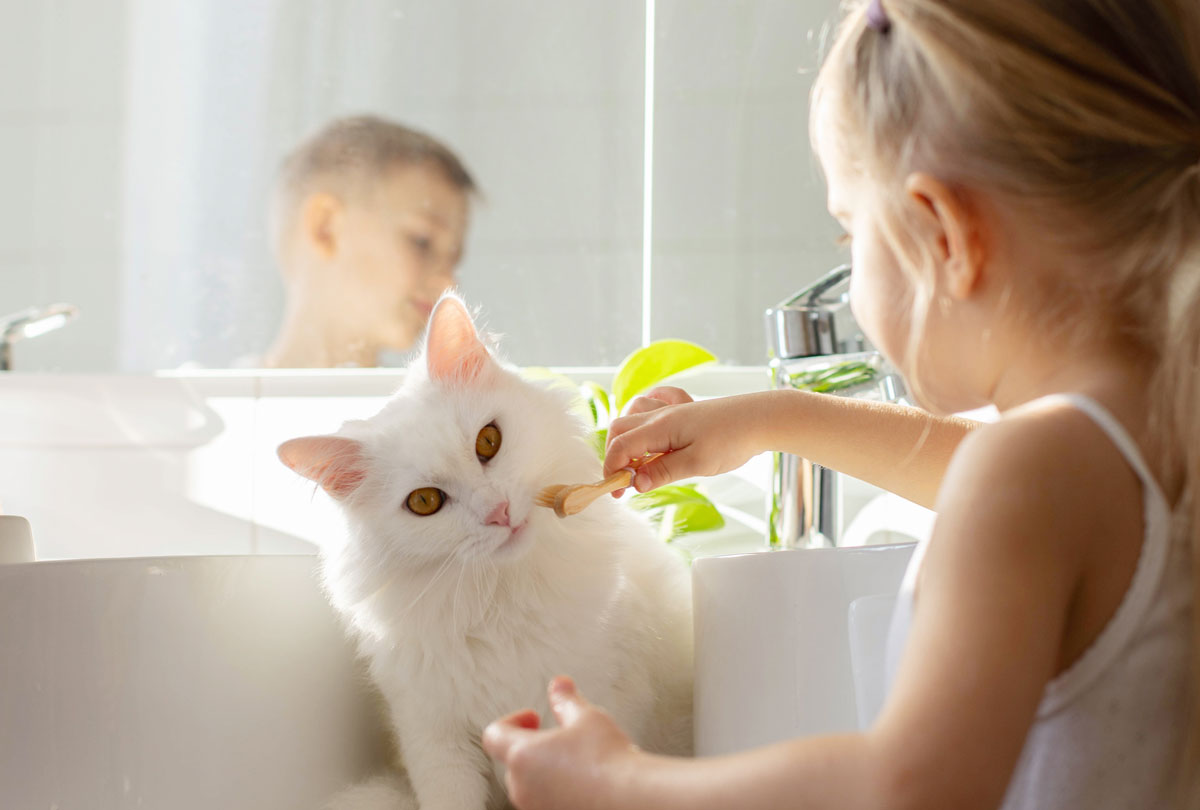Dental care is just as important for dogs as it is for people. If you’ve never embarked down this road, it can be more confusing than your dog’s obsession with the vacuum cleaner. But don’t worry. We’re going to teach you all the basics on how to clean your dog’s teeth and gums. So let’s sharpen those #2 pencils – er, charge your electronics – because THIS is dog dental care 101.
Dental Care Is Essential in Preventing Gingivitis in Dogs
Is dental care for dogs really necessary? 100% yes because it helps prevent gingivitis. Gingivitis in dogs is when their gums become inflamed due to plaque left to build up on their teeth. Plaque is an inevitable part of a dog’s life, as it naturally forms on the teeth after meals.
Plaque is the enemy of healthy dog gums and teeth because it’s filled with bacteria and will quickly harden into yellow-brown tartar, attracting even more plaque!
Heavy tartar buildup can only be removed through a professional dental cleaning, as it requires scaling tools to remove. (Don’t try this at home, people!) No one enjoys forking over money for a professional dog dental cleaning, but once you get this done, you’ll give your dog a clean slate, and with good oral care at home, you may even be able to avoid future cleanings at the vet.
If you think gingivitis in dogs won’t happen to YOUR pet, here’s a sobering statistic: 90% of our canine companions show signs of gingivitis by two years old.
Fortunately, gingivitis in dogs is the earliest of the four stages of periodontal disease and is completely reversible with good oral care.
Gingivitis in Dogs: What Are the Warning Signs?
- Redness & swelling along gum line
- Halitosis – this is often the first warning sign
- Sticky, creamy-colored plaque on the teeth
- Thin red line on the gums next to the teeth
If left untreated, gingivitis in dogs can advance to the latest stage of gum disease, marked by bone loss, loose teeth, gum recession, and pain for the pet. Bacteria from the gum infection can also circulate throughout the dog’s bloodstream, affecting the vital organs and ultimately cutting their lives short. That’s why there’s a huge focus on prevention and healthy dog gums, starting from an early age.
What Do Healthy Dog Gums & Teeth Look Like?
If you’ve never peeked at your dog’s smile, now’s the time, as this will give you an indicator of how to proceed with your pet’s oral care. Also, be sure the vet is looking at your pet’s teeth whenever you go in for your dog’s annual vaccinations.
Your dog’s teeth should be white and free of yellow-brown tartar and be tightly sealed by the gums.
Healthy dog gums will be bubble-gum pink with no redness, bleeding, swelling or abnormal colors like blue, yellow, or white, which indicate a larger health issue.
If you press on your dog’s gums, they should lighten to a pale pink or white color and then return to their normal hue soon after. This shows that the blood flow to your dog’s gums is in good working order.
As you look at your dog’s gums, you’ll want to run a finger over them. Healthy dog gums should be smooth and slippery. If you see any dog mouth cysts (bumps or lumps), be sure to have a vet do an oral examination, as dog mouth cysts can damage their bone, gum tissue and teeth.
(Gum) Things That Make You Go Hmm ...
- Black spots on dogs’ gums. Unless the black spots on dog’s gums are raised (a sign of melanoma or other oral issues), there’s no need to worry. It’s simply pigmentation in their mouths, handed down through their genes. You may also notice these black spots on their tongue. It’s important to regularly look at your dog’s gums so you can spot any changes.
- Dog’s gums growing over teeth. If you notice your dog’s gums growing over their teeth, it’s not your imagination. This is called gingival hyperplasia and it’s a common condition that usually sets in around middle age. Gingival hyperplasia can affect a single tooth or all of them. This extra tissue can cause increased plaque and tartar production, leading to periodontal disease. Also, dogs with gums growing over teeth often have very bad breath because of bacteria getting trapped in the pockets of the tissue. If your dog has gingival hyperplasia, your vet will likely recommend surgery to remove the excess tissue.
Best Way to Clean Dogs' Teeth & Ensure Healthy Dog Gums
Toothbrushing is the best way to keep your pet’s teeth clean and fight gingivitis in dogs. Now, before you’re like, no way am I going to brush my dog’s teeth, please know that with a little time upfront, it CAN be easy, and your dog could even grow to like it.
OK, so here’s the game plan. One to two weeks before you ever brush, get your dog used to you handling his or her mouth. Dip your finger in broth or canned tuna or salmon juice, lift your dog’s lips and rub it along their teeth and gums, calmly praising your dog as you do so. If they tolerate this, you’re guaranteed to have an easier time with toothbrushing.
What you'll need to brush your dog's teeth
Besides a can-do attitude, here’s what you’ll need to set yourself up for dog toothbrushing success:
- Pet Toothpaste: Please make sure to use a toothpaste formulated for dogs. Ingredients in human toothpaste like fluoride and xylitol can make pets sick. They can’t spit like we can, so anything in their toothpaste will be swallowed.
- Pet Toothbrush: Many pet parents, especially those of small dogs, find that a fingerbrush works best, as they’re easier to maneuver around in the mouth and they’re ultra-gentle on the gums. Of course, if you’re worried your dog will chomp on your finger, then go with a handled brush by all means! Pet toothbrushes are better suited for a pet’s mouth, so don’t grab one from your own pack!
Here's the pet toothpaste that gets the tails wagging
Oxyfresh Pet Dental Gel Toothpaste is the preferred toothpaste brand of vets and pets alike because of how easy and effective it is. It’s picky-dog approved with no flavors or scents, and it’s the only toothpaste on the market that has the power of Oxygene® to stop plaque in its tracks and instantly freshen bad dog breath.
Oxygene® is a proprietary, non-toxic ingredient that neutralizes plaque- and bad breath-causing compounds right at the source. No coverups with fake mint or chicken flavors! You can even purchase this pet toothpaste in a kit paired with a soft silicone fingerbrush.
Dog Toothbrushing Tips
- Brush when your dog is tired and relaxed, like after a long W-A-L-K.
- Make sure to give a treat afterward, even if it didn’t go well. This will build a positive association with toothbrushing in your dog’s mind.
- Go slow. Aim for short sessions and work your way up as your dog gets used to toothbrushing.
- Never pin or force your dog down to brush their teeth. This will scare them, and they will remember that feeling in the future.
- Focus on the outer tooth surfaces, especially the molars. This is where plaque and tartar accumulate most. Also, don’t forget to brush the gum line to ensure healthy dog gums.
- Keep at it. Consistency is key with a toothbrushing routine. You can do it!
- On days you don’t brush, you can keep up on your dog’s oral health by using a convenient pet dental spray.
How to Clean Dogs' Teeth Without Brushing
For dog parents who don’t have the time, desire or patience to commit to a toothbrushing routine, no worries. You can still ensure healthy dog gums, keep their breath fresh, and fight gingivitis in dogs by using a high-quality dental water additive for dogs. Simply add to their water bowl daily and call it good!
The most important thing to look for in a dental water additive is that it’s flavor free. (No self-respecting pup wants mint-flavored water.) After all, it doesn’t matter how great a product is if the dog won’t drink it.
If you’re trying to cut down on your daily screen time, let us save you the search and recommend Oxyfresh Pet Dental Water Additive. It’s the most popular dog water additive on the market with over 26,000 Amazon reviews. People love it because it’s flavor free, provides the EASIEST way to clean dogs’ teeth without brushing, and most importantly, IT WORKS.
Paws Down, the Easiest Way to Clean Dog Teeth
- Free of flavors & scents
- Vet recommended & USA made
- Cleans dog’s teeth without brushing
- Non-toxic & safe for all pets in the home
- Fights plaque, tartar & bad dog breath with every drink
Dog Teeth Cleaning Toys: Do They Work to Clean Dog's Teeth?
Toys and treats can be used as an add-on to a dog dental routine, but they shouldn’t be the only way your dog’s teeth get a little love. Where to start in your search? Look for products with the VOHC (Veterinary Oral Health Council) seal, which confirms that a product helps stop plaque and tartar on animal teeth.
Things like rubbery Kongs, balls and bendable bones are good options. The toy should be softer than pets’ teeth, but not so soft that it can be chewed and swallowed. Keep in mind, if your dog is in the later stages of periodontal disease, certain toys and treats can be too hard for their teeth and cause fractures.
Can You Use Raw Bones to Clean Dog's Teeth?
Raw bones are another effective way to supplement your dog’s regular oral health routine ... if you don’t mind the mess. Raw bones have lots of teeth-friendly minerals and nutrients, and chewing on them stimulates saliva enzymes that naturally fight plaque. Plus, a good gnaw helps polish those pearly whites!
Raw versus cooked bones matter. Raw bones are better because they’re softer and filled with collagen. Cooked bones, on the other hand, can easily splinter into large pieces, presenting a choking risk or damage to the intestines. They can also be too hard for a dog’s teeth and cause fractures, as the high cooking temperatures break down the collagen, leaving behind a hardened mix of calcium that’s denser and more brittle.
Raw poultry bones like the wings, neck, feet and back bones are good choices for dogs; just make sure the bone cannot fit fully in the dog’s mouth.
How Often to Clean Dog's Teeth?
To give your furry friend the healthiest smile possible, daily dog dental care is recommended. But reality check: there’s dishes to do and shows to binge, so if that’s not doable, commit to three times a week at a minimum. This will support healthy dog gums and teeth and maintain their fresh breath. Less than three times a week won’t have much impact at all.
And if you’re using a water additive to clean dog’s teeth, daily dog dental care should be a walk in the park because it’s as simple as turning a cap and pouring solution into their water.
Dog Dental Cleaning: Let's Do This
Now that you know how to clean your dog’s teeth and how often to do it, there’s only one thing left to do: get going on it! Dog dental care could be the best gift you ever give your sweet pooch ... besides that annoying squeak bone, of course. _x0001F609_

